On the descent of the epididymo-testicular unit, cryptorchidism, and prevention of infertility
- PMID: 29163975
- PMCID: PMC5686796
- DOI: 10.1186/s12610-017-0065-8
On the descent of the epididymo-testicular unit, cryptorchidism, and prevention of infertility
Abstract
This comprehensive review provides in-depth coverage of progress made in understanding the molecular mechanisms underlying cryptorchidism, a frequent pathology first described in about 1786 by John Hunter. The first part focuses on the physiology, embryology, and histology of epididymo-testicular descent. In the last 20 years epididymo-testicular descent has become the victim of schematic drawings with an unjustified rejection of valid histological data. This part also includes discussion on the roles of gonadotropin-releasing hormone, fibroblast growth factors, Müllerian inhibiting substance, androgens, inhibin B, and insulin-like 3 in epididymo-testicular descent. The second part addresses the etiology and histology of cryptorchidism as well as the importance of mini-puberty for normal fertility development. A critical view is presented on current clinical guidelines that recommend early orchidopexy alone as the best possible treatment. Finally, by combining classical physiological information and the output of cutting-edge genomics data into a complete picture the importance of hormonal treatment in preventing cryptorchidism-induced infertility is underscored.
Cette revue complète traite en profondeur les progrès réalisés dans la compréhension des mécanismes moléculaires à la base de la cryptorchidie, une pathologie fréquente décrite pour la première fois aux environs de 1786 par John Hunter. La première partie est. centrée sur la physiologie, l’embryologie et l’histologie de la descente épididymo-testiculaire. Durant les 20 dernières années, la descente épididymo-testiculaire est. devenue la victime de dessins schématiques associés à un rejet injustifié de données histologiques valides. Cette partie discute aussi les rôles qu’ont dans la descente épididymo-testiculaire l’hormone libérant les gonadotrophines, les facteurs de croissance fibroblastiques, l’hormone antimüllérienne, les androgènes, l’inhibine B, et l’insuline-like 3.La seconde partie aborde l’étiologie et l’histologie, ainsi que l’importance de la minipuberté pour un développement normal de la fertilité. Un regard critique est. porté sur les recommandations cliniques actuelles qui conseillent la seule orchidopexie précoce comme le meilleur traitement possible. Finalement, en combinant les informations issues de la physiologie classique et la production des données génomiques les plus en pointe dans un tableau complet, l’importance du traitement hormonal dans la prévention de l’infertilité induite par la cryptorchidie est soulignée.
Keywords: Cryptorchidism; Epididymo-testicular descent; GnRHa-treatment; Infertility; Mini-puberty; RNA sequencing.
Conflict of interest statement
Competing interests
I declare that I have no financial or non-financial competing interests.
Publisher’s Note
Springer Nature remains neutral with regard to jurisdictional claims in published maps and institutional affiliations.
Figures
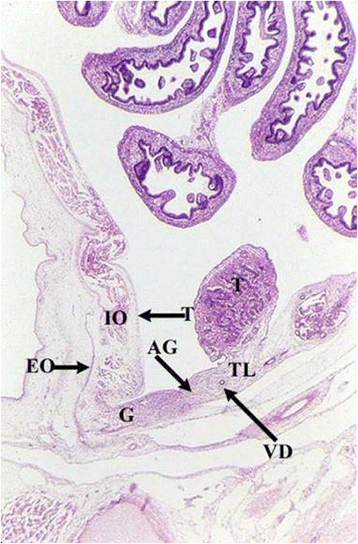
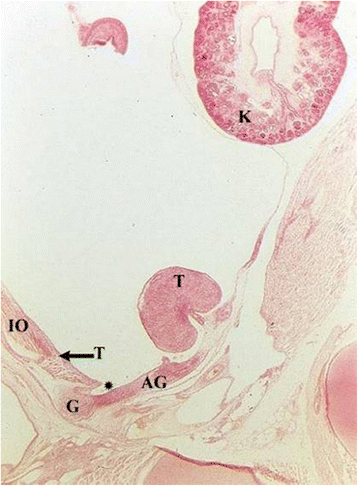

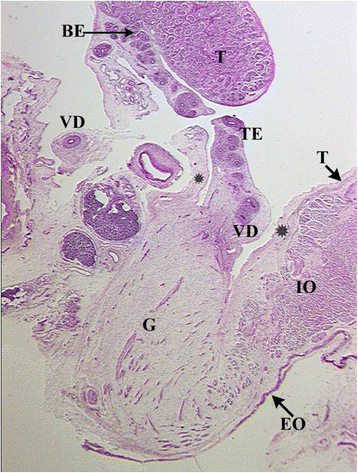



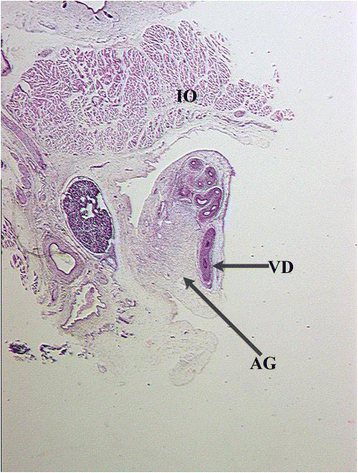
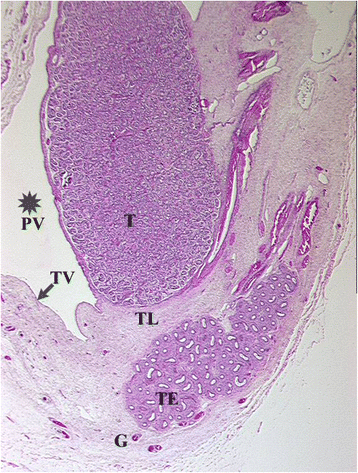

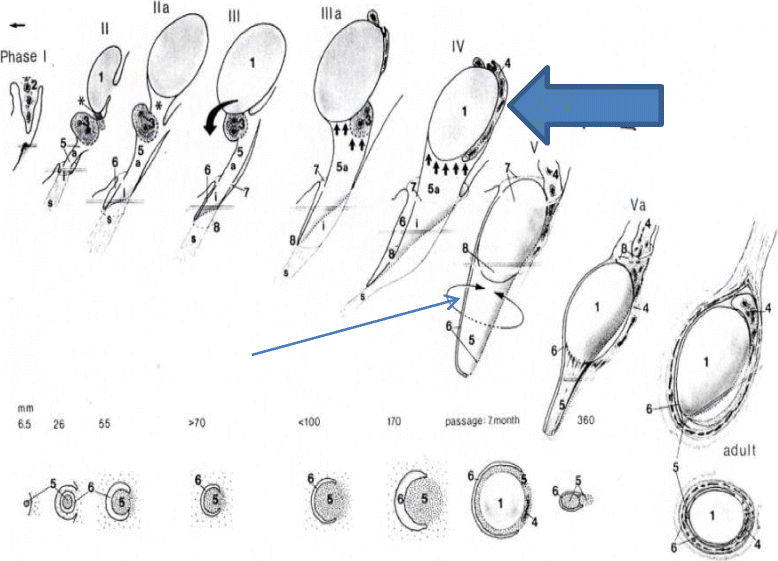
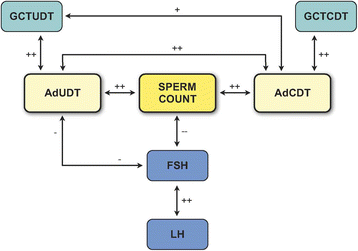
Similar articles
-
Gubernaculum and Epididymo-Testicular Descent: Review of the Literature.Acta Med Litu. 2022;29(2):201-210. doi: 10.15388/Amed.2022.29.2.6. Epub 2022 Jun 29. Acta Med Litu. 2022. PMID: 37733393 Free PMC article. Review.
-
Involvement of Fibroblast Growth Factors and Their Receptors in Epididymo-Testicular Descent and Maldescent.Mol Syndromol. 2016 Feb;6(6):261-7. doi: 10.1159/000444033. Epub 2016 Feb 2. Mol Syndromol. 2016. PMID: 27022326 Free PMC article. Review.
-
Is Hormonal Treatment of Congenital Undescended Testes Justified? A Debate.Sex Dev. 2019;13(1):3-10. doi: 10.1159/000496418. Epub 2019 Jan 26. Sex Dev. 2019. PMID: 30721907 Review.
-
Testicular expression of long non-coding RNAs is affected by curative GnRHa treatment of cryptorchidism.Basic Clin Androl. 2019 Dec 27;29:18. doi: 10.1186/s12610-019-0097-3. eCollection 2019. Basic Clin Androl. 2019. PMID: 31890219 Free PMC article.
-
Opinion: Comment on Evaluation and Treatment of Cryptorchidism: AUA/AAP and Nordic Consensus Guidelines.Urol Int. 2016;96(3):249-54. doi: 10.1159/000443741. Epub 2016 Jan 30. Urol Int. 2016. PMID: 26824668 Review.
Cited by
-
Role of Gubernaculum testis inervation during the process of testicular migration in human fetuses.Int Braz J Urol. 2024 Sep-Oct;50(5):519-529. doi: 10.1590/S1677-5538.IBJU.2024.9914. Int Braz J Urol. 2024. PMID: 39059017 Free PMC article. Review.
-
External pressure induces the dysfunction of spermatogonia via triggering the intrinsic pathway of apoptosis.Transl Androl Urol. 2024 Aug 31;13(8):1405-1415. doi: 10.21037/tau-24-158. Epub 2024 Aug 26. Transl Androl Urol. 2024. PMID: 39280678 Free PMC article.
-
Gubernaculum and Epididymo-Testicular Descent: Review of the Literature.Acta Med Litu. 2022;29(2):201-210. doi: 10.15388/Amed.2022.29.2.6. Epub 2022 Jun 29. Acta Med Litu. 2022. PMID: 37733393 Free PMC article. Review.
-
Development of a putative adverse outcome pathway network for male rat reproductive tract abnormalities with specific considerations for the androgen sensitive window of development.Curr Res Toxicol. 2021 Jul 22;2:254-271. doi: 10.1016/j.crtox.2021.07.002. eCollection 2021. Curr Res Toxicol. 2021. PMID: 34401750 Free PMC article.
-
Viral infections that alter estrogen levels during pregnancy may contribute to the etiology of cryptorchidism.Basic Clin Androl. 2021 Jul 8;31(1):16. doi: 10.1186/s12610-021-00135-7. Basic Clin Androl. 2021. PMID: 34233607 Free PMC article.
References
-
- Hutson JM. Testicular descent. In: Hutson JM, Thorup JM, Spencer WB, editors. Descent of the testis. 2nd ed. Switzerland: springer international publishing. 2016. pp. 17–44.
-
- Bergh A, Helander HF, Wahlqvist L. Studies on factors governing testicular descent in the rat-particularly the role of gubernaculum testis. Int J Androl. 1978;1:342–356. doi: 10.1111/j.1365-2605.1978.tb00605.x. - DOI
Publication types
LinkOut - more resources
Full Text Sources
Other Literature Sources

